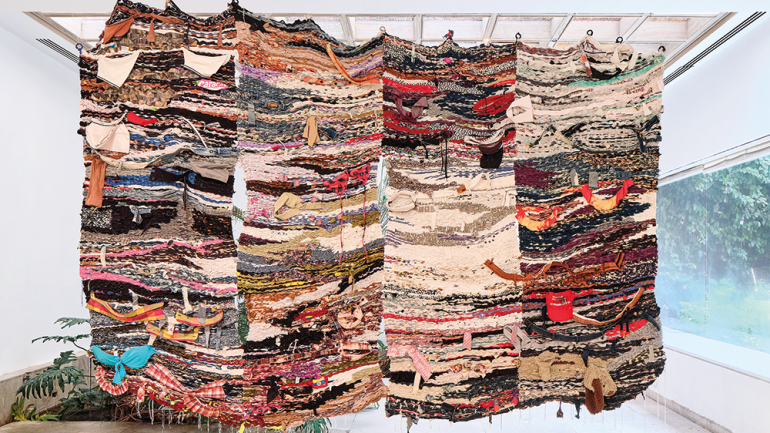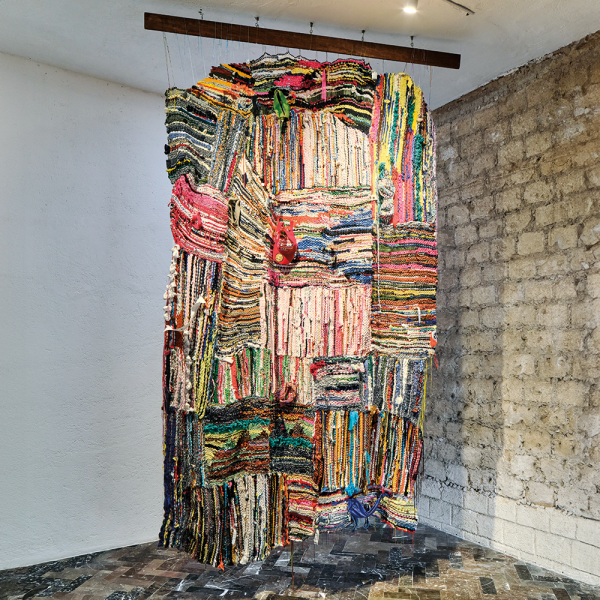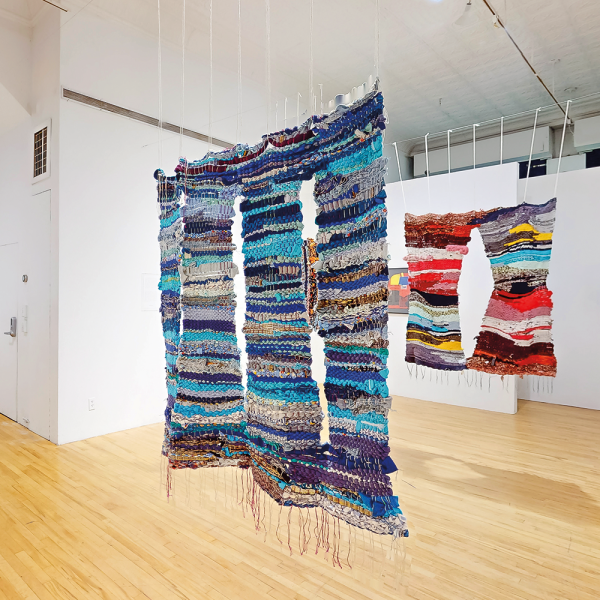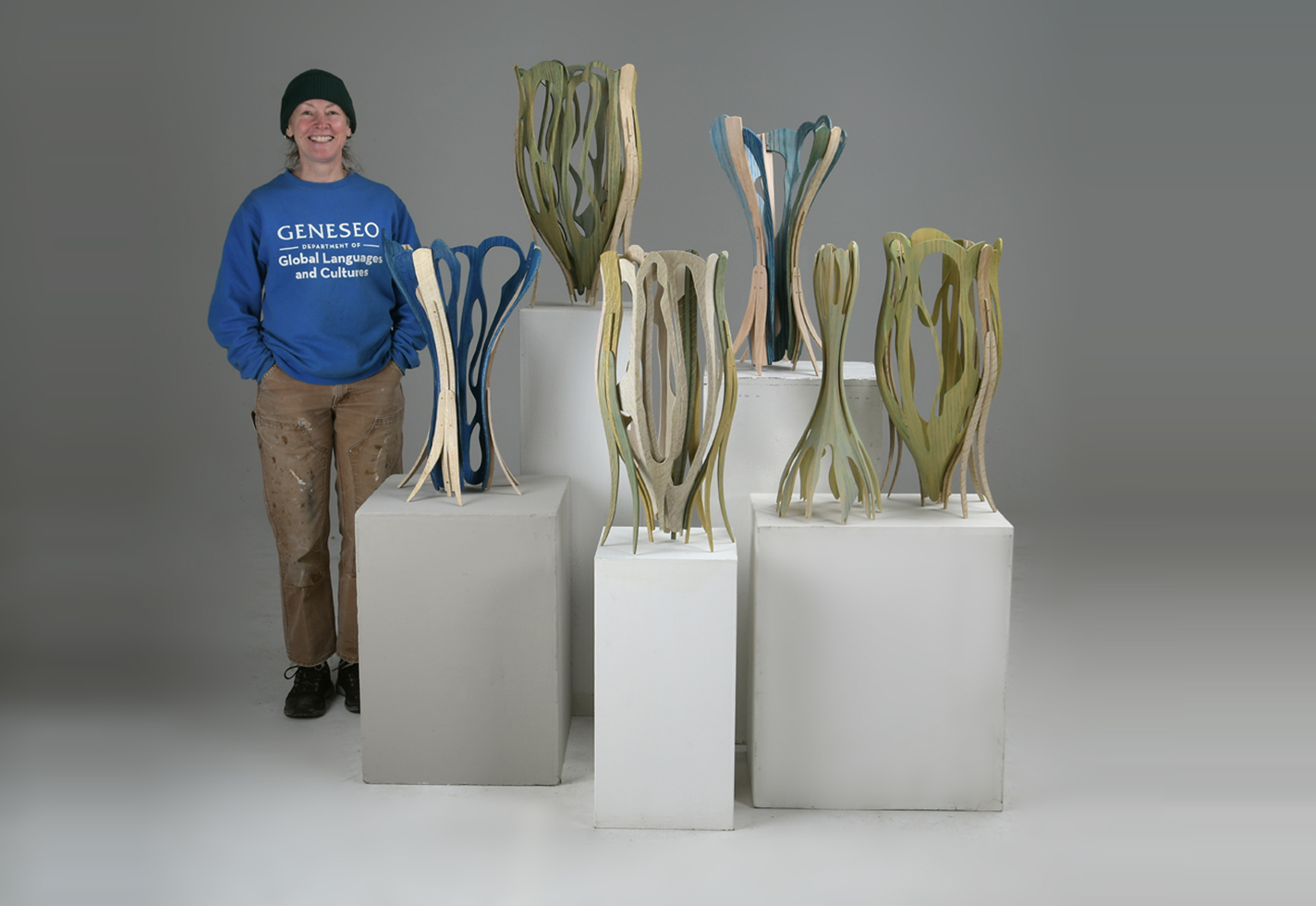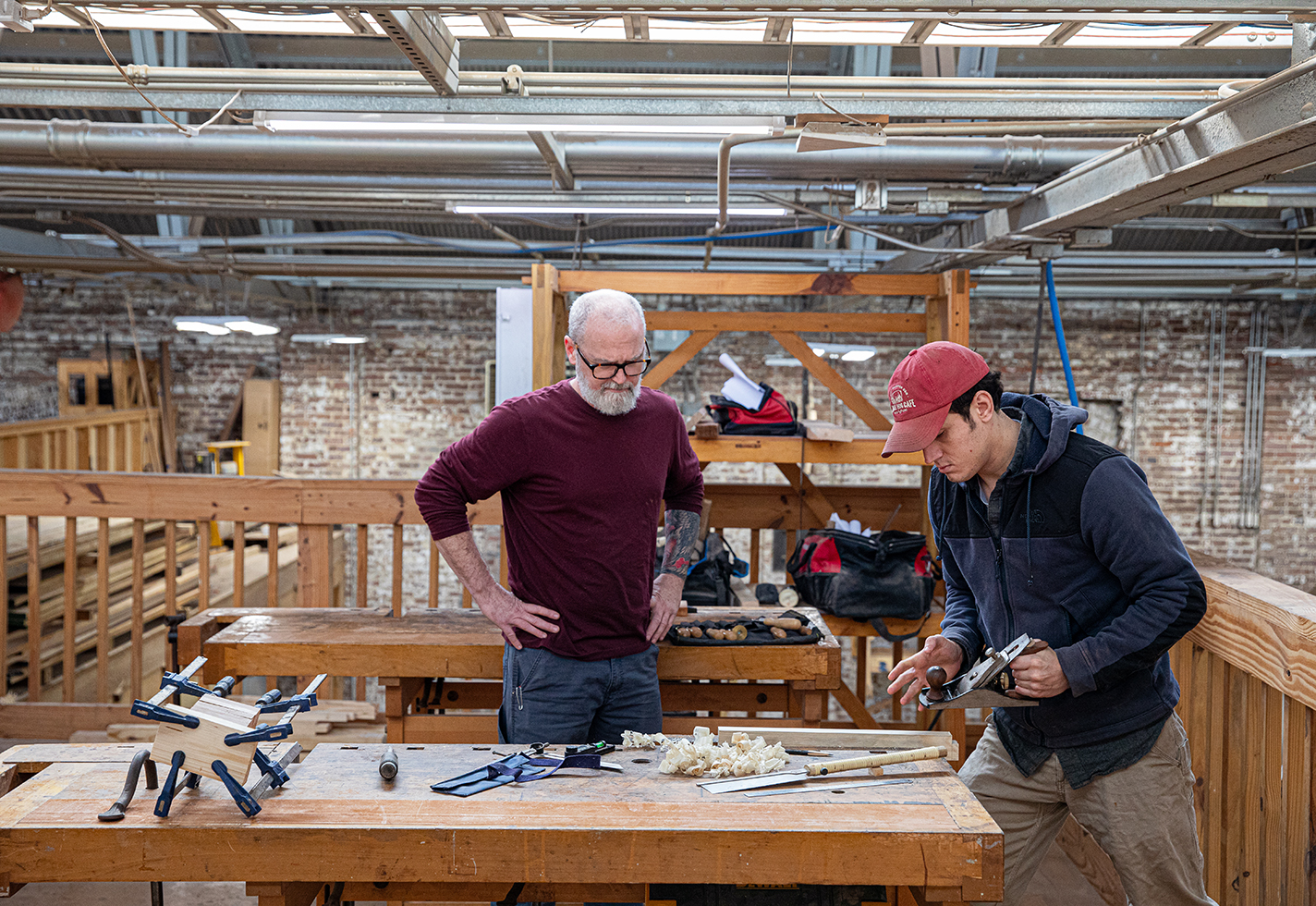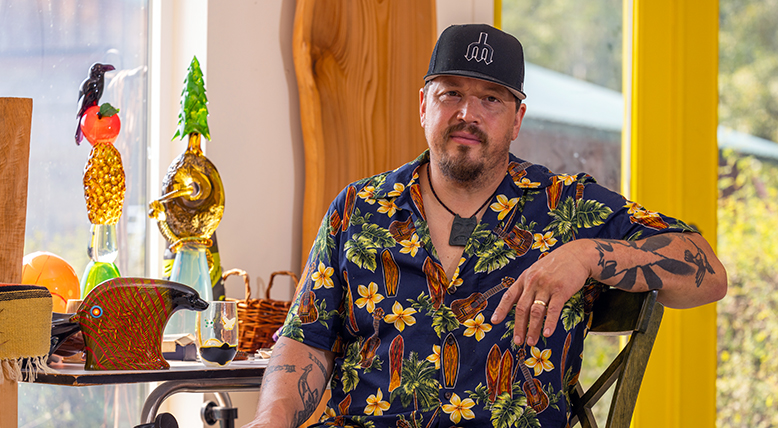While growing up on Isla de Margarita, an island off the coast of Venezuela, Cassandra Mayela reworked her clothing instinctively. “My mom was terrified of me and my clothes because I would bleach them or paint them or cut them,” she says. “[I would] alter them somehow, and it was very intuitive. I remember I was in weaving classes when I was nine.”
After years of working in digital textile design and selling vintage and secondhand clothing in her native country, Mayela fled Venezuela in 2014, just as she turned 25, due to ongoing unrest. Eventually she settled in New York City, where she began her artistic and modeling careers.
Since then, she has documented the migratory stories of Venezuelans through her textile series Mapas de Desplazamiento (Maps of Displacement) and similar works. The series, launched in 2021, so far consists of two enormous hanging tapestries: Maps of Displacement Vol I: NYC 2021 and Maps of Displacement Vol II: East Coast 2022. These pieces, which explore how identity is shaped, are the result of more than 200 interviews with Venezuelan migrants and incorporate the clothing and other items they’ve donated. The works have been shown in galleries across the US and Mexico, as well as in the Venezuelan Embassy in Washington, DC.
Mapas started with observation. In 2019, Mayela noticed an increasing number of Venezuelan restaurants and establishments in the city and often heard the accent of her homeland. Interested in why Venezuelans were coming to New York, she stopped people on the street to inquire about their stories. At the same time, the Brooklyn-based artist noted the lack of Venezuelan voices in the news whenever the country’s political and economic crises were discussed.
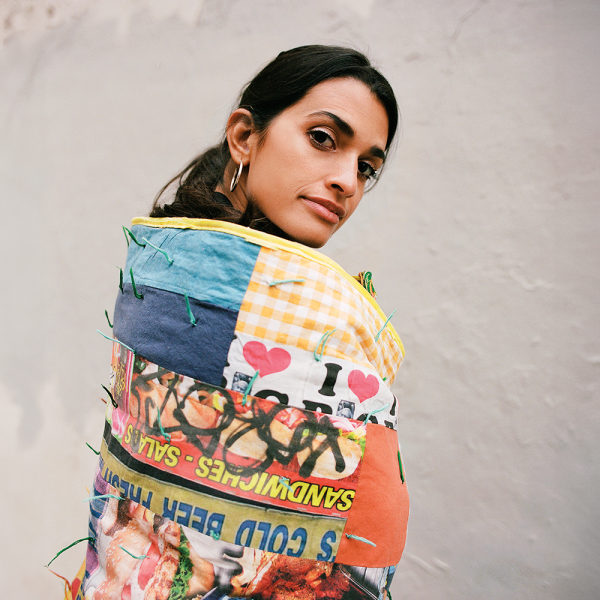
Artist and model Cassandra Mayela grew up on an island off the coast of Venezuela and now lives and works in New York City.
